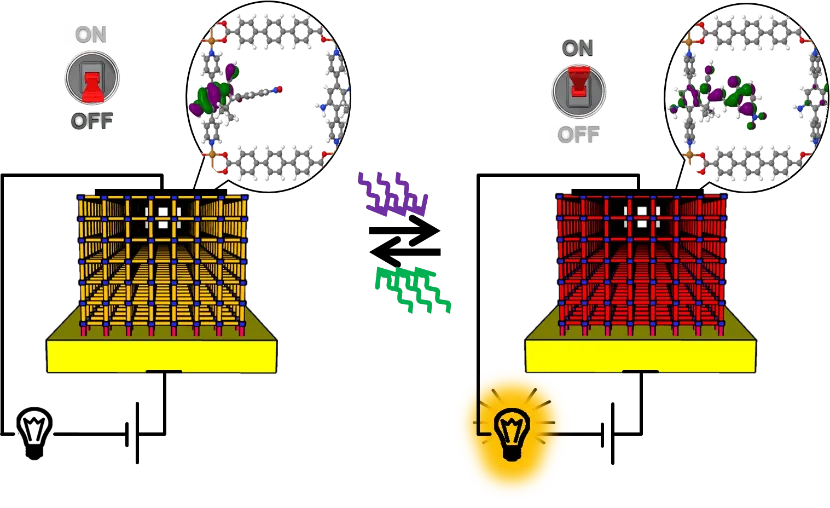| Consortium: | |
| PD Dr. Lars Heinke Karlsruhe Institute of Technology (KIT) Institute of Functional Interfaces (IFG) | |
| Prof. Dr. Wolfgang Wenzel Karlsruhe Institute of Technology (KIT) Institute of Nanotechnology (INT) | |
| Prof. Stefan Hecht, PhD RWTH Aachen Institut für Technische und Makromolekulare Chemie, and DWI Leibniz-Institute for Interactive Materials | |
| Project: | Thin MOF films with photoswitchable electronic properties and On-Off conductance |
| Abstract: | Thin films of surface-mounted metal-organic frameworks (SURMOFs) with photoswitchable electronic properties and conductance values that can be reversibly changed over several orders of magnitude are the target of this project. Based on our previous proof-of-principle publication with spiropyran embedded in MOFs, showing for the first time the remote switching of the electric conduction of a MOF material, we will prepare photoswitchable MOF thin films with spiropyran photoswitches incorporated at controlled positions with defined intermolecular distances and orientations. There, as shown by ab initio calculations of the charge transfer, the on-off ratio will be more than three orders of magnitude higher, and the conduction as well as the conduction switching will be highly anisotropic, with oriented conduction highways. Moreover, by organic functionalization of the photoswitches in the MOF, the HOMO and LUMO levels will be tuned with the aim to switch between electron (n) and hole (p) conduction in a highly controllable fashion. To demonstrate the potential device implementation, two-layer films will be prepared where the top-down current through a functional, light-detecting SURMOF (top-layer) is switched on or off by switching the spiropyran-SURMOF-layer with switchable conductance (bottom layer). Furthermore, the application in adaptive and configurable electronics will be explored, where “conducting wires” in the large-area SURMOF are reversibly written by focused light irradiation, with the long-term goal to realize photoprogrammable devices for optical computing, memories and displays. In this project, we cover the entire research chain from the synthesis of custom-made light-responsive organic molecules over the preparation and investigation of the photoswitchable MOF films up to the demonstration of the system integration, combined with quantum-mechanical calculations and multiscale modelling of the switching and charge transfer processes in order to achieve a detailed understanding and guide the design of devices. |
| Publications: |
